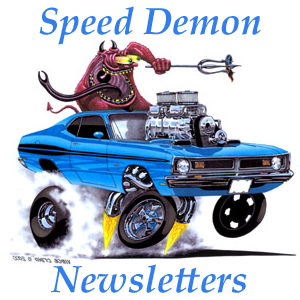
Speed Demon News: The Bandit Era Part 1: 1977
By: Patrick Smith
The Pontiac 50th Anniversary Limited Edition Trans Am was a sales success in 1976. Based on the John Player Special graphics found on the Formula 1 circuit, these Starlight Black cars with gold pinstripes and German Gothic lettering truly reinvigorated the Trans Am model, giving it an identity of its own that freed it from the late 1960s bondage of the muscle car, raw power and lack of finesse. The truth was, by 1976, Trans Am had changed quite a lot. The 455 was on the way out, and the 400 V8 was the big horsepower player. Inside, comfort and luxury dominated. The graphics era was getting into high gear and no car had better hood decals than the 1977 Trans Am.
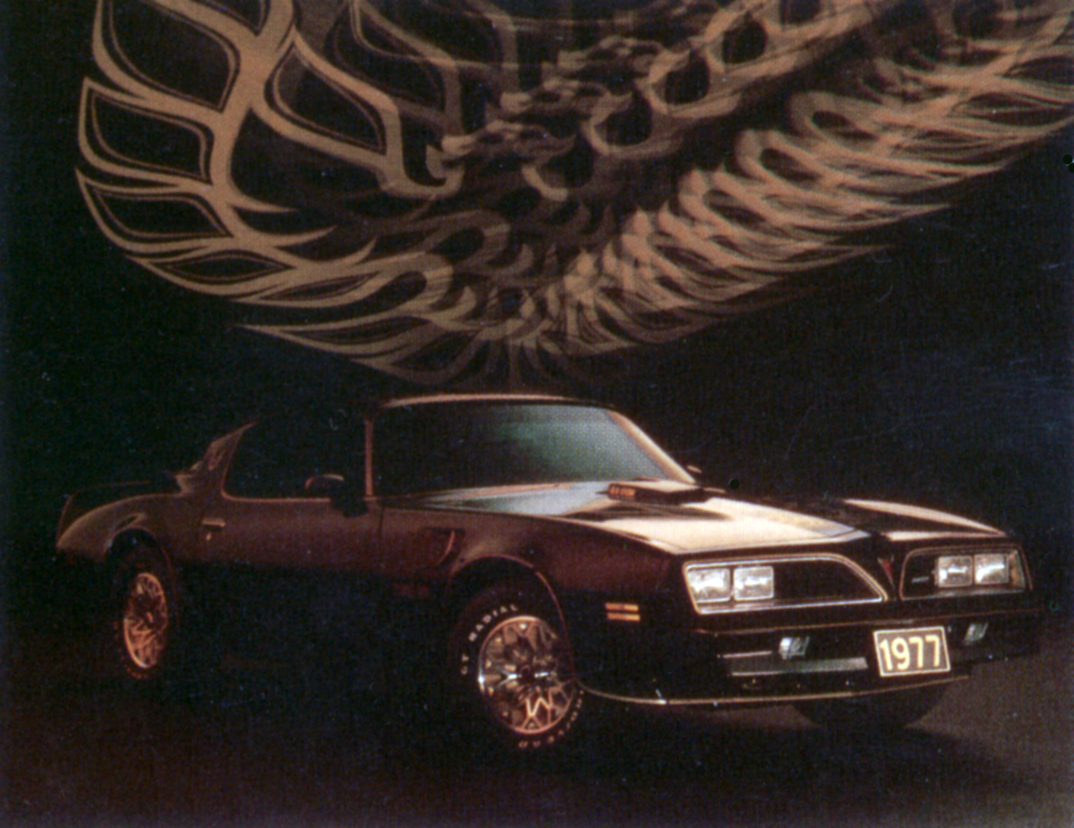
Trans Am SE shows off its gold and black hood bird.
The debut of a movie featuring Burt Reynolds, Sally Fields, Jackie Gleason and Jerry Reed also had an automotive star. The Limited Edition TA package returned for 1977 as a premium model called Special Edition Trans Am. Pontiacís Marketing Executives knew they were on to something good. Their internal dealerís memo dated March 25thth, revealed the SE car was labeled Y82. The initial Y82 model was only available on Trans Ams and the package consisted of gold pin striping on roof top, windshield pillars, door sills, fender spats, trunk deck lid, endura nose, sport mirrors, roof top and trunk lid. Gothic style lettering was used on the front fenders, and rear spoiler. Interior appointments included gold anodized engine turned dash plate, gold eagle shifter bezel on automatic console shifters, gold eagle power window door escutcheons and gold eagle steering wheel bezel.
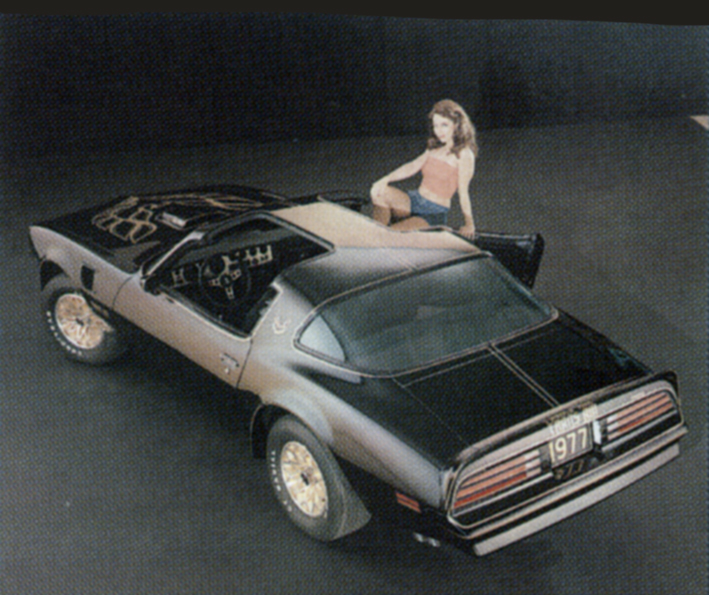
A more casual woman evokes the memory of "Frog" as portrayed by Sally Fields.
Starlight Black was a mandatory paint code. The interior color was open to suggestion. Although the movie car is black, real Y82 cars have been produced in red, blue, black, buckskin, even white. The interior was available in custom or standard versions using Lombardy cloth or Doeskin Vinyl.
The most visible option was the Hurst Hatch roof panels. The roof was divided into a Targa design using smoked glass panels with locking bar mechanisms that connected the glass frames to the metal roof. A Hurst-Campbell Industries concept, all Y82 Trans Ams were sent to the facility after production to have the conversion done. This was alright for small boutique runs around the 2,800 mark that Pontiac planned. Movie popularity and the stunning good looks of the car made orders treble and soon Hurst Industries was backlogged. Survivor cars have been examined and evidence was found of hasty work with the sawzall. The inner space between roof and headliner was filled with a hard cell foam and special Hurst trim and weather strips completed the installation along with locking caps in each roof section. Necessity being the Mother of invention, Pontiac created another UPC code, Y81. This offered the SE package with everything except the hatch roof system. Consumer demand was strong enough to sell a few of these rare versions. Many black TAs has been redone to resemble Y81s.
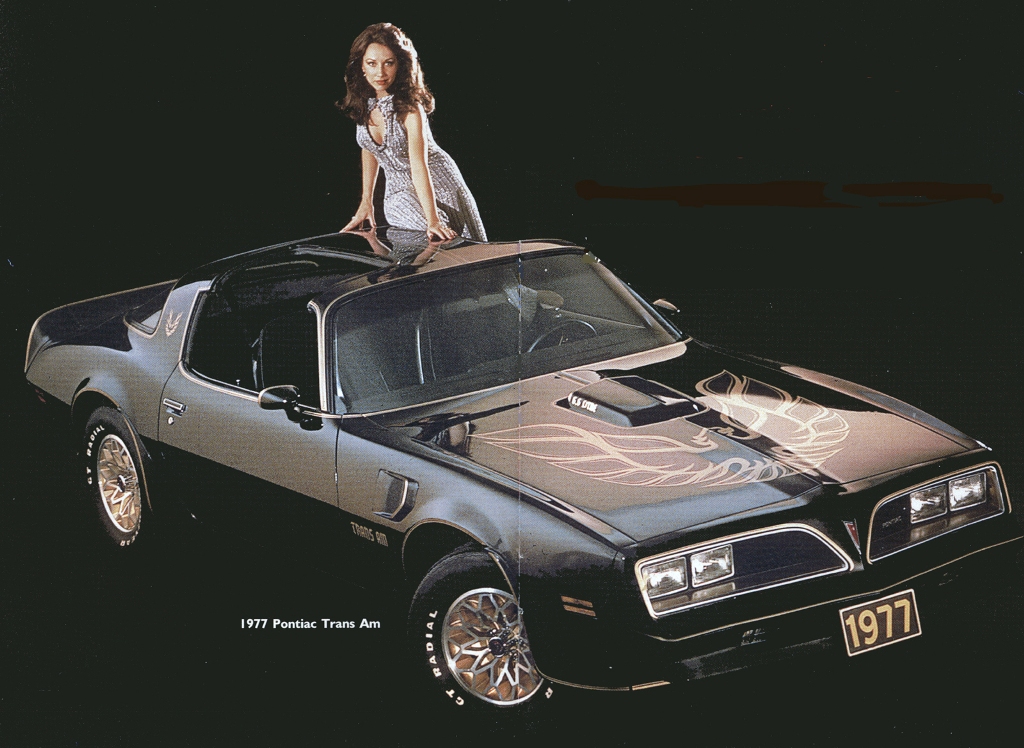
Pontiac used heavy doses of fantasy to sell their dream car including the glamour photo of what can only be called "Disco Lady" ready for a night on the town.
Letís examine further the SE engines. The Pontiac 400 was offered in base and high performance Trans Am form. The base 400 was the L78. It made 180 hp with 7.6:1 compression ratio. The W72 Trans Am 400 made 200 hp with slightly higher 8:1 compression ratio. There was a third V8, the Oldsmobile 403 making 185 hp with 8:1 compression ratio. The Olds was a mandatory engine in California and high altitude zones.
Transmissions offered included the automatic TH350 three speed or the Warner Super T-10 four speed manual. The TH400 was discontinued in 1976 following a redesigned cross member and unibody for the TH350 and catalytic converter in 1975. The exhaust system is single pipe entering a transverse muffler with two tailpipes. The W72 engine offered a bit of performance for the dedicated fan. Available that year as an automatic or four speed, the W72 used a hotter camshaft, special HEI distributor and 350 cid heads with the 6 4X casting. The W72 distributor offered the best vacuum advance curve in any Pontiac engine that year, with the specs reading; Advance starting @ 500, Centrifugal starting at 4 degrees @ 700 rpm and full advance of 10 degrees @2200 rpm. Maximum advance reads 12 degrees @12 inches of vacuum. A good recurve will really wake the engine up. It worked really well with either the automatic or stick W72 cam.
Sales of the Y82 Trans Am were brisk. 13,706 hatch roof versions sold and 1,861 Y81 Trans Ams left the plant. The Y81 was an alternative package which gave the buyer everything except the hatch roof panels. It was a way to fill orders for cars when Hurst Industries ran into a brick wall keeping up with the demand. That left no time for producing more Y82 cars.
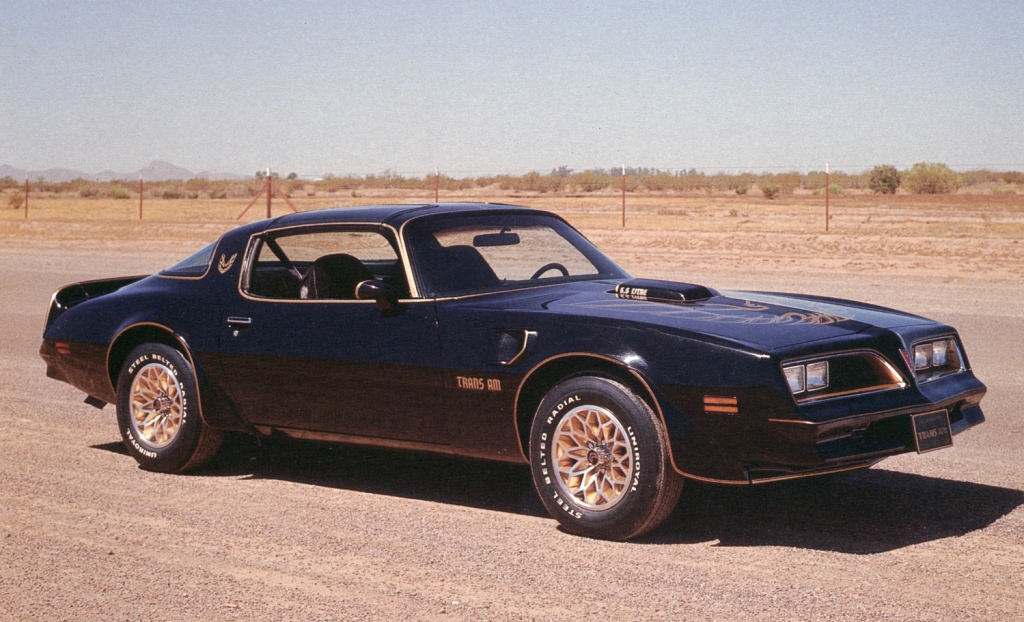
The Special Edition delivered on its promise, starting a legend for 1970s car fans.
Hot Options: JW8 WheelsóNew for 1977, the aluminum snowflake wheel replaced the honeycomb wheel from 1971 as part of the SE package. Finished in polished aluminum with gold tinted lace inserts and metallic bullet center caps, the snowflake wheel offered big tire sizes for the 1970s era. Back then, big tires for factory cars were 15x7 wheels. The Rally II was available with the SE package as well and was finished in two tone silver spokes with gold relief paint and stainless steel trim rings. Rare, but a few of the SEs came with this wheel, code N67 for the two tone option as applied to the SE package.
CC1-Glass Sunroof- For 1977, the hatch roof panels were Hurst Hatches only. Although listed as available separately in 1977 with the UPC code CC1, it would be a fairly rare stand alone option. Normally it is bundled with Y82 package.
WW7: Hood decal-Trans Am- Since the only color available on SE cars in 1977 was Starlight Black, the hood bird color scheme was black with gold outline and highlights. The sail panel pillars received smaller versions of the decal.
UN8: Citizens Band radio- The ne plus ultra option for the true Smokey & the Bandit aficionado is this premium 23 channel CB radio. Expensive even when new, it required a front console (D55) and radio accommodation package (UN9).
W72 Engine: The high performance version of Pontiacís 400 V8 was a sleeper in 1977. Not distinguished by the VIN tag as both 400s used code Z, you had to look at the suffix code on the block to see what you actually got. True W72 engines used WA suffix code for manual transmission cars and Y6 for automatic transmissions. Of course, the partial VIN should match the one on your dashboard.
Y82 Special Edition Package W Hatches: A complete group of paint, interior and trim goodies, the option is popular and frequently cloned using ordinary black TAs. Your safest bet is to order a PHS document to confirm what the car is AND check the carís door, dash, and hidden VINS to confirm it is real and not a retagged, front clipped or back clipped from wrecked Y82s. It has happened!
Y81Special Edition Package Hatch delete: The same as above minus the Hurst Hatches. Even easier to fake than a Y82, you must rely on a PHS document AND visual examination of the body at hand to make sure it isnít a clip job.
Stay tuned next time as we cover 1978 SE Trans Ams!